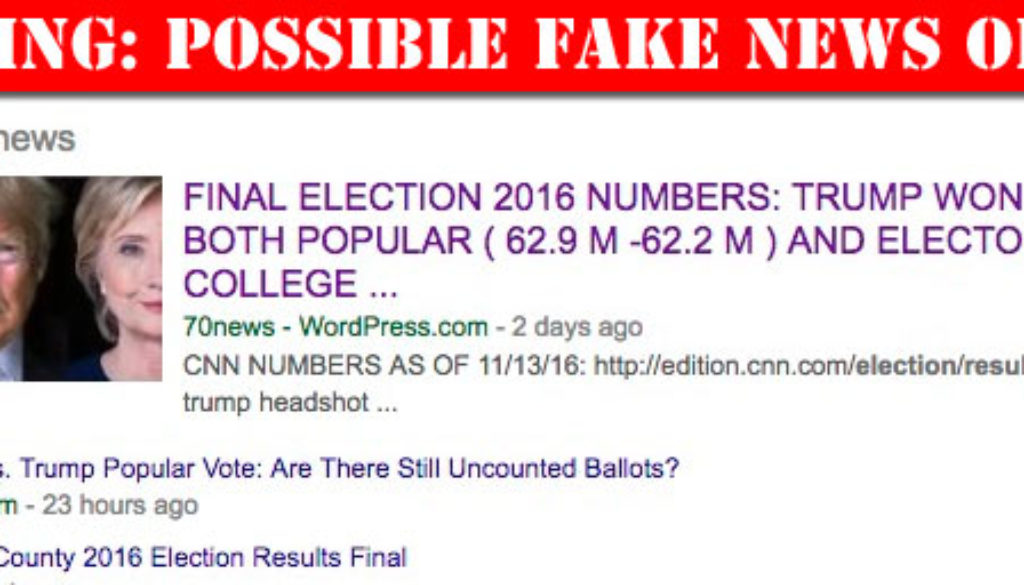How To Spot Fake News
Here is the complete list of browser extensions, either released or in development, that will alert you when you’re looking at fake news, misleading stories, or outright propaganda:
- …
- ……
- ………
Okay, now that we’ve gotten THAT out of the way… let me be clear about this: THERE ARE NONE THAT WILL WORK. No digital filter should ever replace your own ability to smell bullshit. Verifying what you read online is empowering, better for society, and (best of all) trivially easy.
Trust me.

So wait… why not rely on tools made by Very Smart Nerds? We rely on filters like Adblock Plus to protect us from abusive ads, after all. Can’t we build tools to sift the bullshit from the gems? How about a big red banner at the top of the screen that flashes when it senses a shady source?
We can probably come close, but we honestly shouldn’t.
What happens when you’ve come to rely on that red banner? What if it’s wrong? What if it doesn’t appear because you’re the first to read a piece of propaganda? Or, more likely, what if Equally Smart Nerds have found the right way to phrase their propaganda so it slips past the filters? Take a look at what’s making it through your email spam filters… clearly it doesn’t take much to bypass the gatekeepers.
The most frightening reason not to rely on that red banner: What happens when the people controlling the filter want to push their own agenda? Maybe they’re not the benevolent Nerds who built it, maybe they’re just the Nerds who hacked it and took control to help sway an election.
Stop Outsourcing Your Sense of Reason, Start Using Existing Tools
Never let someone else dictate your truth. We can auto-filter ads because we don’t turn to display ads for facts and truth. Advertisements add zero value to our society so we can cut them from our lives entirely. Fact-based journalism, however, nourishes a healthy republic like kale to hipsters.
So how do you avoid fake news? It only takes a few seconds, usually. Do this before sharing or commenting on anything, ESPECIALLY if you agree with what it says:
- Look for shady tactics in the story’s sources, if there are any. Are they just quoting someone on Twitter? Are they just saying “sources say [whatever]”? “It’s been reported that [whatever]”?
- Copy the headline, tagline, or phrase in question.
- Look it up on Snopes.com – Chances are good the same hoax was used against Al Gore or George W. Bush more than a decade ago.
- Google it (or use another search engine) and see what comes up. Try adding the word “hoax” to the end.
- Check if any old-school, reputable news sources (not Breitbart or Huffington Post, I mean real news sources) are covering the same story. You don’t have to visit a hundred news sites, just try clicking the “News” section of your Google search. Ignore any stories that are just writing a story about the spread of the story… seriously, why do journalists even do that?
- Remember: If all your friends are sharing it, that doesn’t mean shit. Tweetstorms are exactly how bullshit spreads.

Stop Spreading Fake News, Start Making Yourself Smarter
The best way to defend yourself from fake news is the same way investors defend themselves from bubbles: Diversify. I recommend subscribing to a few different news feeds or podcasts coming from different angles: One domestic, one from a foreign source (like BBC World), and one that’s known for a different slant than you usually prefer. Doesn’t have to be Fox “News” or HuffPo, but something your parents used to read when it came in paper form isn’t a bad idea.
And when online, if you can’t find any real sources to verify that meme, it’s probably bullshit. At the very least, it’s not worth forwarding until it’s proven or disproven. After a while you’ll learn to spot the shady tactics without using Snopes or Google.
Congratulations, you’ve just installed a filter in your own brain.


